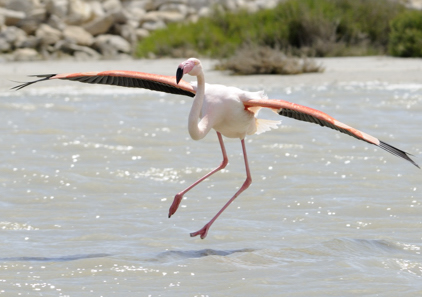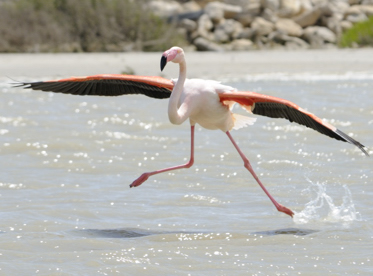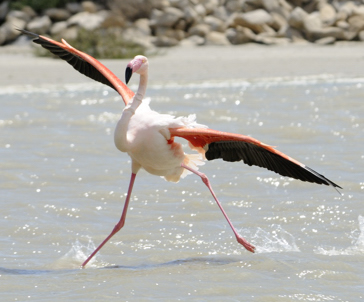Destinations
2025
2026
2027

... where there are many holiday photos to enjoy.

The air holidays shown are ATOL Protected by the Civil Aviation Authority. Our ATOL number is ATOL 3253. ATOL Protection extends primarily to customers who book and pay in the United Kingdom. Click on the ATOL logo if you want to know more.
Flamingos
Wildlife film-maker Nick Upton was in the Camargue in July 2010 and kindly sent Honeyguide a selection of his stills. Here are just a few.
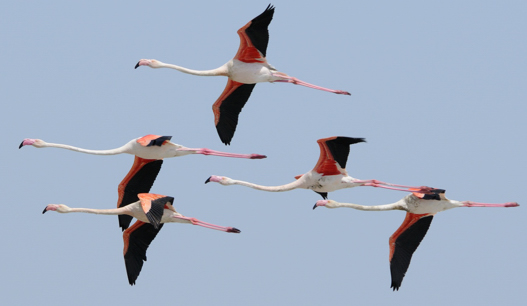
Flamingos in the Camargue
–
and elsewhere around the Mediterranean
– are greater flamingos
Phoenicopterus roseus. It's the most widespread of the six species of flamingo in the world, though not the most numerous. This honour falls to the lesser flamingo
P. minor, found in sub-Saharan Africa, especially the Great Rift Valley.
Occasionally ungainly, they have great grace when flying or landing.
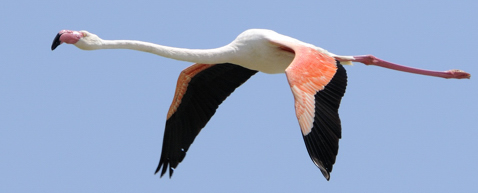
Young flamingos hatch with grey plumage; the pink in the plumage comes slowly from their second year.
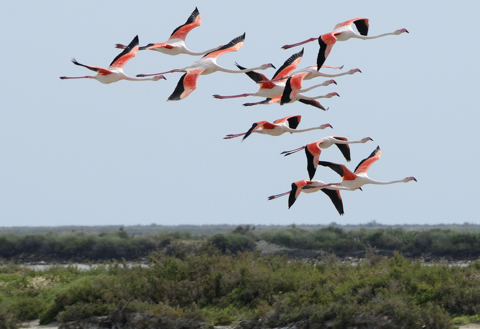
There is a tendency in the conservation world to speak of landscape and nature conservation as separate and different. See flamingos in the Camargue and it's clear that wildlife is part of the landscape.
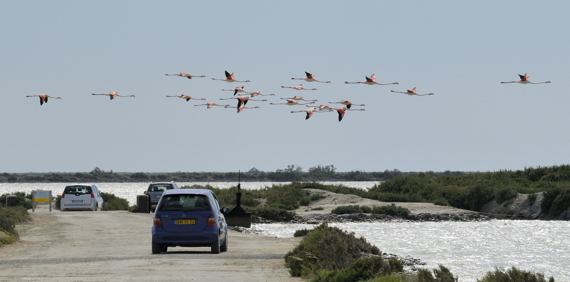
Back to the Camargue . . . . . Chris Durdin, October 2010 . . . . . Nature notes
Flamingos or flamingoes? Both are used, but the former is more usual in the bird world. More about flamingos on Wikipedia here.
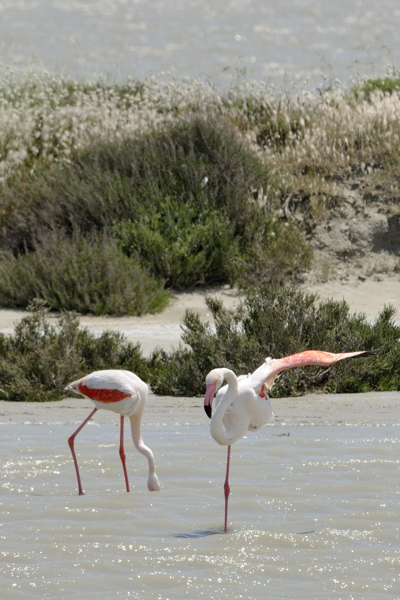
The other flamingo species, James's, Andean, Caribbean and Chilean, are all from the New World. If you've seen a flamingo in the wild in the UK, it's likely to have been an escaped Chilean flamingo with its distinguishing feature of pink knees, compared with the entirely pink legs of greater flamingos.
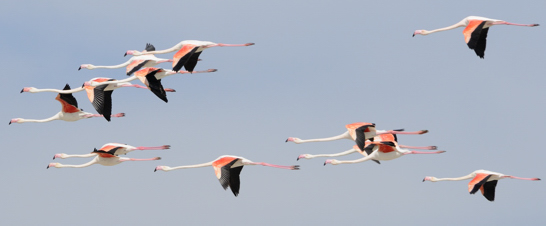
Exporting flamingos: like many colonial birds, flamingo nesting seasons are often complete failures. That's OK, as once full-grown, they are long-lived. With site protection and control of predators, notably yellow-legged gulls, the Camargue population is doing well and is a net exporter, fuelling an increase in numbers and new colonies around the Mediterranean.
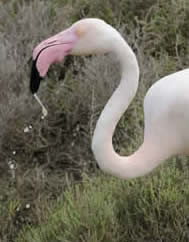
The beak, helped by hairy structures called lamellae which line the mandibles, and the large rough-surfaced tongue, is used, upside-down, to filter-feed on algae and shrimps.
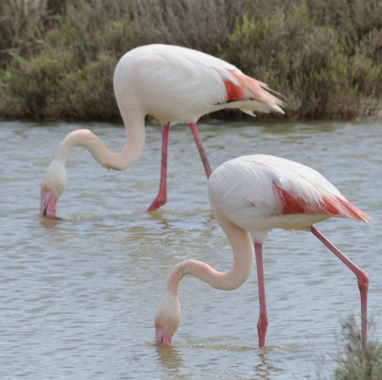
Did Concorde borrow some design features from flamingos?
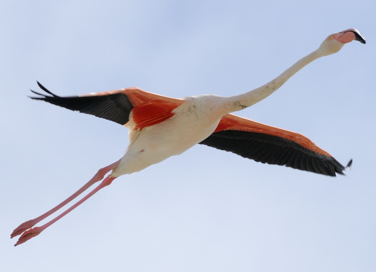
Many of Nick Upton's nature photos are on www.naturepl.com and www.rspb-images.com or contact Nick on biophile24-eorders@yahoo.co.uk

